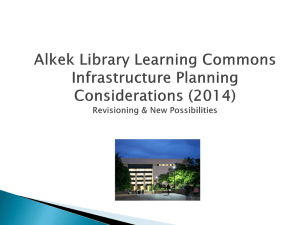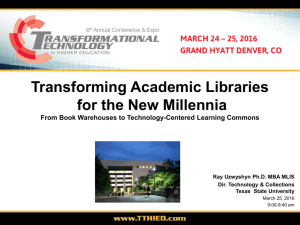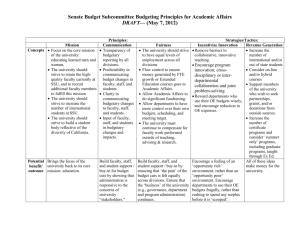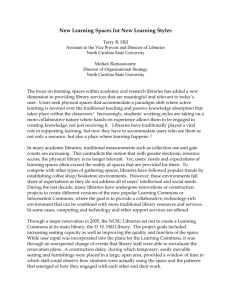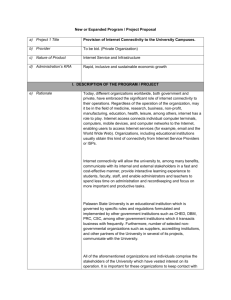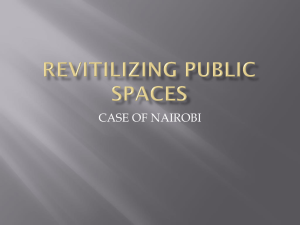New Millennia Academic Research Library
advertisement
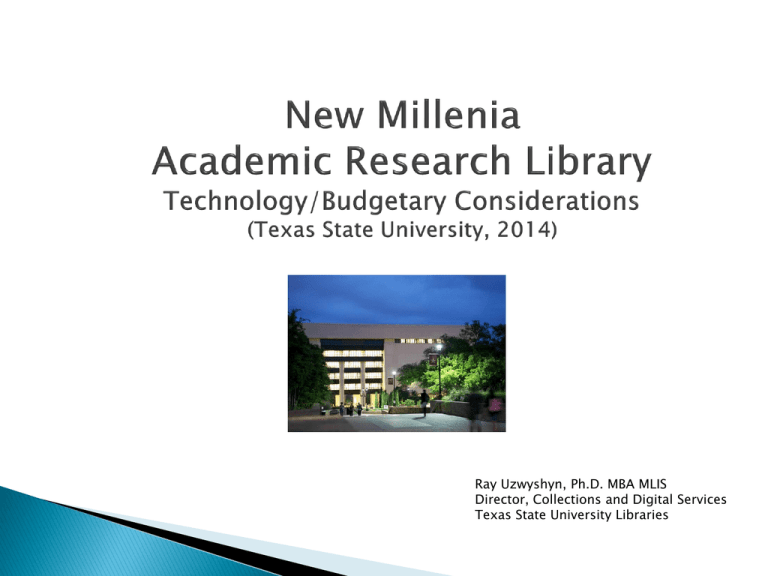
Ray Uzwyshyn, Ph.D. MBA MLIS Director, Collections and Digital Services Texas State University Libraries The greatest danger in times of turbulence is not the turbulence; it is to act with yesterday’s logic. (Peter Drucker, ALA Trends Report, Snapshot of a Turbulent World, 2014) Technologies deployed in the library will change over time. Budgets should reflect this by allocating into flexible categories without necessarily establishing a long termspecific compartment for each new area Planning associated with technologies and budgets should not be constrained based on current technology equipment or practices. Library budgets should anticipate technologies we don’t expect to see in the library, and our current expectation of more technology is probably an underestimate. Transformation of Scholarly Record (How Research is being pursued, accessed, transformed) New Forms of Multidisciplinary Research Increased Need for Data Management, Digitization and Learning Tools Infrastructures Shift Towards Mobile Content What Gets Lost in the 340% increase? Multidisciplinary Budget Lines for Research Universities (Horizon Report, p. 16-17) Shift from acquiring Content (both Print and electronic) to Digital Production, Training, infrastructures, human resources Open Source Journal Publishing and Print on Demand Presses (Infrastructure) Budgetary Lines Needed Information Technology: Fast Moving and Disruptive, Budgets Must Flexibly Allow for this Information Institutions: Budgetarily Navigating Changing Ground, Changing Materials Budget of Library of 20th Century as Content Centered Information Use and Consumption: Scholarly Generational Shift from old (paper based) to new Media budgetary Implications Information Use and Consumption Trends Increasing Connectivity Integration of Physical/Digital Life Overlap of Old and New (Demographic Differences in Media) Physical Space Paradigm/Budgetary Shift to Learning Commons should also be reflected in Budgetary Content Shift of Materials Budget Hunt Library NCSU (video) Rice (video, rationale, science) UT Austin (video, humanities) Deloitte University (video, business) Electrical and Connectivity Needs Brown University Rockefeller Library (article) NCSU Hunt Library (infrastructure link) University of Chicago CAVE (article and video) John Hopkins Libraries Brody Learning Commons Display Wall (video) ACRL: Academic Library Makerspaces (article) Library Makerspaces (Resource List), Examples Oregon State University Valley Library (article) University of Michigan 3D Lab (example infrastructure) Traditionally include 3-D printing, but can include other spaces to create content (e.g., large-format printing, physical computing, prototyping sandboxing) Interactive displays, visual media displays, audio/podcast tours and electronic multimedia guides. Examples: MUSING: an iPhone app developed by Texas State (Link) Things mapped to IP addresses/library spaces. Wiring Library Spaces for IP address level connectivity. Electrical/Connectivity Needs for Digital Signage, RFID, Geo-locating, smart scholarly spaces Hunt Library Video, Learning Space Design Playlist Instant Theatres, Learning Work Spaces (video) Lighting Museums and Libraries (lecture video) Internet Connectivity, Moveable Walls, Electrical Workplace of the Future (video), Examples (video), Moveable Walls (video), University is shifting to ARL directions, larger materials budget should innovatively reflect this with content disciplines in an innovative forward thinking manner in a similar fashion to what is going on with the paradigm shift of the physical library space and transformation to learning commons

